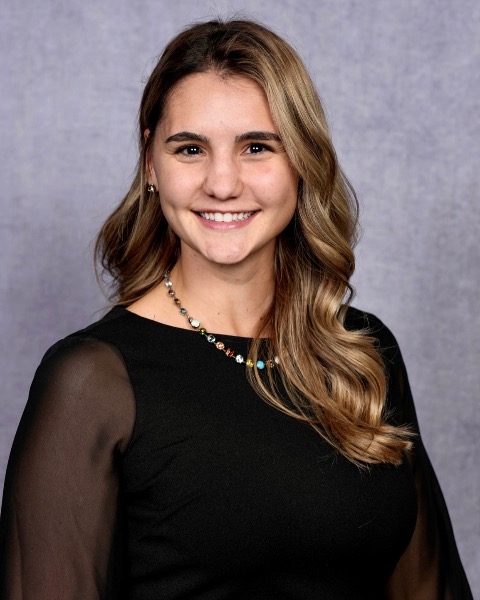Oral Presentation
Session: Massive Mabs
A pilot evaluation of switchback from biosimilars to originator-biologics in the Veterans Affairs population: a signal of biosimilar failure?
Sunday, August 27, 2023
1:45 PM - 2:00 PM ADT
Location: MR201
Publication Number: 274

Kelly M. Bryan, PharmD (she/her/hers)
Medication Safety and Pharmacy Outcomes Fellow
Veterans Affairs Center for Medication Safety, Department of Veterans Affairs
Wexford, United States
Presenting Author(s)
Background: Nonmedical switching, defined as the act of switching patients who are currently stable with their originator-biologic to its biosimilar, presents an opportunity to decrease the high cost of biologics in health systems. Switchback to the originator-biologic following nonmedical switching commonly occurs and is often viewed as a signal of biosimilar failure. However, reason and rate for switchback has not been fully investigated and use of switchback as an effectiveness endpoint in real-world studies may be incorrect.
Objectives: To categorize and quantify the reasons for originator-biologic switchback from a biosimilar in a pilot Veteran patient population.
Methods: A cohort of Veterans who were prescribed at least one of four originator-biologics (bevacizumab, pegfilgrastim, rituximab, or trastuzumab) or its biosimilar between 1/1/19 to 12/31/21 were assessed. Switching patterns were categorized between originator-biologic and biosimilar for each Veteran and the charts of Veterans with the switchback pattern (“originator-biologic, biosimilar, originator-biologic”) were reviewed to identify the reason for originator-biologic switchback from the biosimilar. We categorized the switchback reasons into five categories and computed crude, drug-specific, and reason-specific rates of switchback.
Results: During the evaluation period, 18,443 Veterans were prescribed at least one of the four originator-biologics or its biosimilar. Of these Veterans, 2,137 (11.6%) were switched to the biosimilar, and 49 (2.3%) were switched back to the originator-biologic, corresponding to a switchback rate of 4.1 per person-year. Drug-specific switchback rate ranged from 3.4 to 9.6 per person-year. Five categories of switchback reasons were identified: no documented reason (n=26), erroneous documentation of the switch (n=8), adverse drug reaction (ADR) to the biosimilar (n=5), out-of-stock of the biosimilar due to Veteran switching VA facility (n=7), and provider preference for the originator-biologic (n=3). Switchback rates for each reason ranged from 0.3 to 2.1 per person-year.
Conclusions: Switchback to the originator-biologic was rare among Veterans switched to the biosimilar. Lack of a documented reason for the switchback was common, and switchback due to ADR was uncommon. This evaluation identified multiple reasons for switchbacks. Therefore, it is inconclusive to assume that the switchbacks represent biosimilar therapeutic failure. Our chart review sample was comprised of only Veterans with the switching pattern “originator-biologic, biosimilar, originator-biologic”, inclusion of patterns with additional switches may increase the number of non-ADR switchbacks and decrease the frequency of ADR switchbacks.
Objectives: To categorize and quantify the reasons for originator-biologic switchback from a biosimilar in a pilot Veteran patient population.
Methods: A cohort of Veterans who were prescribed at least one of four originator-biologics (bevacizumab, pegfilgrastim, rituximab, or trastuzumab) or its biosimilar between 1/1/19 to 12/31/21 were assessed. Switching patterns were categorized between originator-biologic and biosimilar for each Veteran and the charts of Veterans with the switchback pattern (“originator-biologic, biosimilar, originator-biologic”) were reviewed to identify the reason for originator-biologic switchback from the biosimilar. We categorized the switchback reasons into five categories and computed crude, drug-specific, and reason-specific rates of switchback.
Results: During the evaluation period, 18,443 Veterans were prescribed at least one of the four originator-biologics or its biosimilar. Of these Veterans, 2,137 (11.6%) were switched to the biosimilar, and 49 (2.3%) were switched back to the originator-biologic, corresponding to a switchback rate of 4.1 per person-year. Drug-specific switchback rate ranged from 3.4 to 9.6 per person-year. Five categories of switchback reasons were identified: no documented reason (n=26), erroneous documentation of the switch (n=8), adverse drug reaction (ADR) to the biosimilar (n=5), out-of-stock of the biosimilar due to Veteran switching VA facility (n=7), and provider preference for the originator-biologic (n=3). Switchback rates for each reason ranged from 0.3 to 2.1 per person-year.
Conclusions: Switchback to the originator-biologic was rare among Veterans switched to the biosimilar. Lack of a documented reason for the switchback was common, and switchback due to ADR was uncommon. This evaluation identified multiple reasons for switchbacks. Therefore, it is inconclusive to assume that the switchbacks represent biosimilar therapeutic failure. Our chart review sample was comprised of only Veterans with the switching pattern “originator-biologic, biosimilar, originator-biologic”, inclusion of patterns with additional switches may increase the number of non-ADR switchbacks and decrease the frequency of ADR switchbacks.

